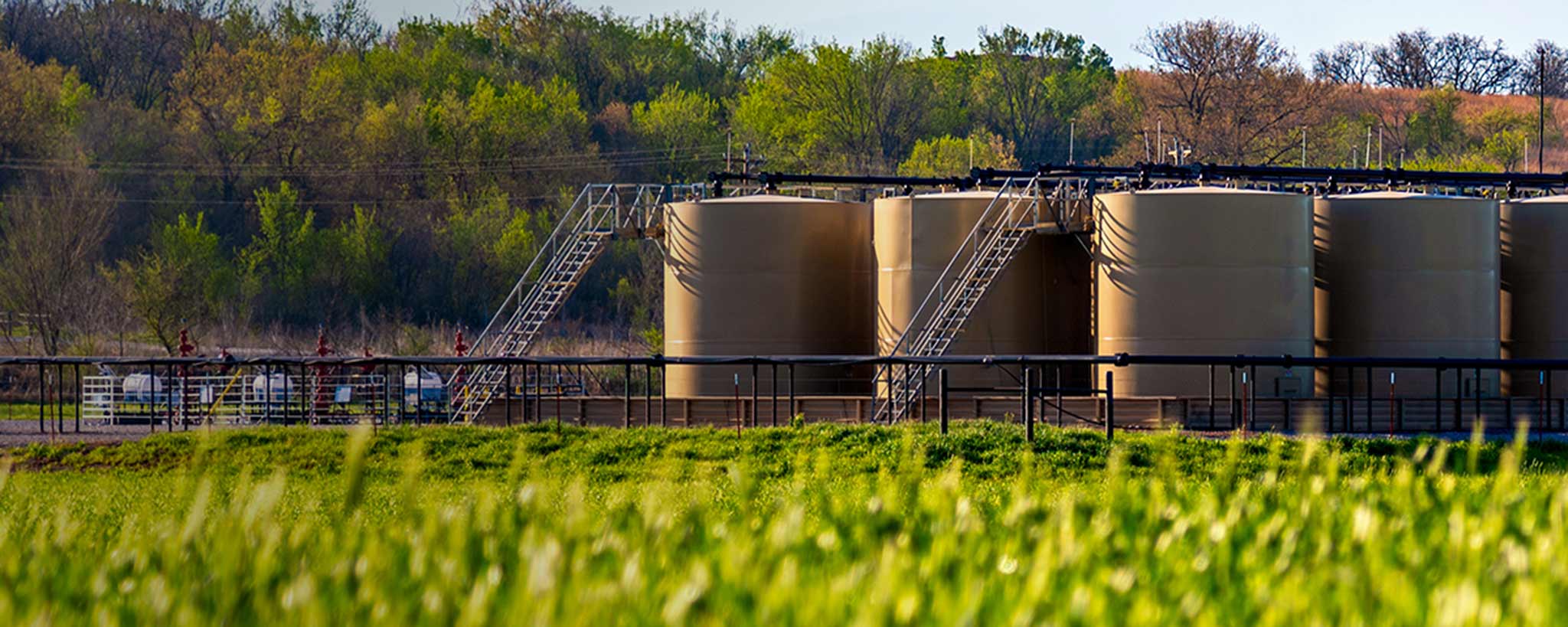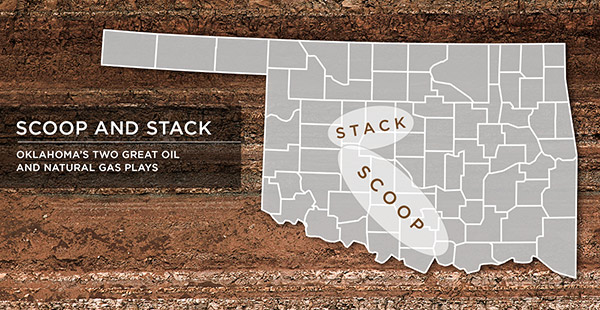
About oil and natural gas production.
The oil and natural gas industry of Oklahoma is one of the most innovative, technologically advanced and environmentally responsible businesses on the planet.
Air.
Through the use of control technology, which is continuously evolving, emissions continue to decline while energy production increases. By deploying advanced technologies, state-of-the-art controls and adherence to the highest environmental standards, our state’s oil and natural gas producers have adopted best practices to limit emissions from engines, natural gas processing equipment and other sources involved in the production of oil and natural gas.
Land.
Once oil and natural gas producers complete well development activities and bring the well into production, they work to reclaim the surface area at the location with native vegetation. Additionally, with the use of horizontal drilling, the amount of surface area required to access the subsurface mineral estate is dramatically reduced. Because of this technology, operators are able to drill multiple wells from one location instead of drilling many more vertical wells to access the same subsurface mineral estate.
Water.
Water is an essential part of the development and production of energy and is a resource we all value. Where technically, operationally and economically viable, the reuse of produced water in the development of oil and natural gas reduces our needs to source freshwater sources. The industry works closely with the Oklahoma Corporation Commission (OCC) on recycling and reuse regulations.
The people of Oklahoma Oil & Natural Gas continue to explore opportunities for reusing and recycling produced water for hydraulic fracturing, utilizing water treatment processes including aeration, sedimentation, biological treatment, reverse osmosis, natural evaporation and condensation.
The development of steerable drilling systems in the 1980s and a series of enhancements that followed allowed drillers to start vertically, then “kick off” horizontally through thousands of feet of petroleum-rich shale. Since the late 1990s, these systems have continued to improve with ever-increasing accuracy and efficiency.
Horizontal drilling allows operators to efficiently produce energy resources while using fewer rigs and occupying less surface area. Wells can be drilled as much as 10,000 feet (approximately two miles) underground and another 10,000 feet (or more) horizontally – or lateral.
Watch the video below to learn more.
More resources here:
Hydraulic fracturing.
Hydraulic fracturing has been a critical part of oil and natural gas production for more than 50 years. It’s the process of using water, sand and additives to fracture shale rock formations, unlocking trapped oil and natural gas that would otherwise be impossible to reach.
The power of two technologies combined.
On its own, hydraulic fracturing made it possible to fracture shale formations to release their oil and natural gas at a given point and depth. But it was in 2006 when producers cracked the code. By combining hydraulic fracturing with horizontal drilling, they were able to access multiple layers of oil shale in several directions – through a common well. One horizontal well could do the work of several conventional vertical wells. This breakthrough signaled the beginning of the shale revolution.
Frequently asked questions.
- Hydraulic fracturing fluid is normally 99.5% water and sand and 0.05% chemical-based additives that vary from well to well.
- View the What Is in Hydraulic Fracturing Fluid? factsheet
- While the rock formation is porous enough to hold fossil fuels, the holes are not large enough to allow oil and natural gas to easily flow through the rock and into the wellbore.
- View the Why is Hydraulic Fracturing Used? factsheet
- The Oklahoma Corporation Commission is responsible for the regulation of oil and natural gas drilling and production, pipeline safety, petroleum storage tanks and filling stations, public utilities, trucking and railroad crossings. Through the Oil and Gas Conservation Division of the OCC, oil and gas well drilling is regulated in a manner that prevents waste, safeguards mineral property rights, protects the environment and ensures public safety.
- View the Hydraulic Fracturing – Oklahoma Regulations factsheet

The unique formations that make up the SCOOP and the STACK have multiple zones that allow for production from multiple layers of rock formations thousands of feet below the surface. Technologies such as horizontal drilling allow these two plays to rival some of the nation’s most reliable and productive areas, including the Permian Basin in Texas and the Marcellus Appalachian Basin in the Northeast, positioning Oklahoma as a top oil and natural gas producing state in the country.
Empowering Oklahoma through energy education.
Learn more about the ever-evolving story of Oklahoma’s oil and natural gas industry and its vital role in powering our state and nation. Through interactive modules and engaging tools, discover how energy shapes our modern way of life and the opportunities ahead for a sustainable, reliable future.